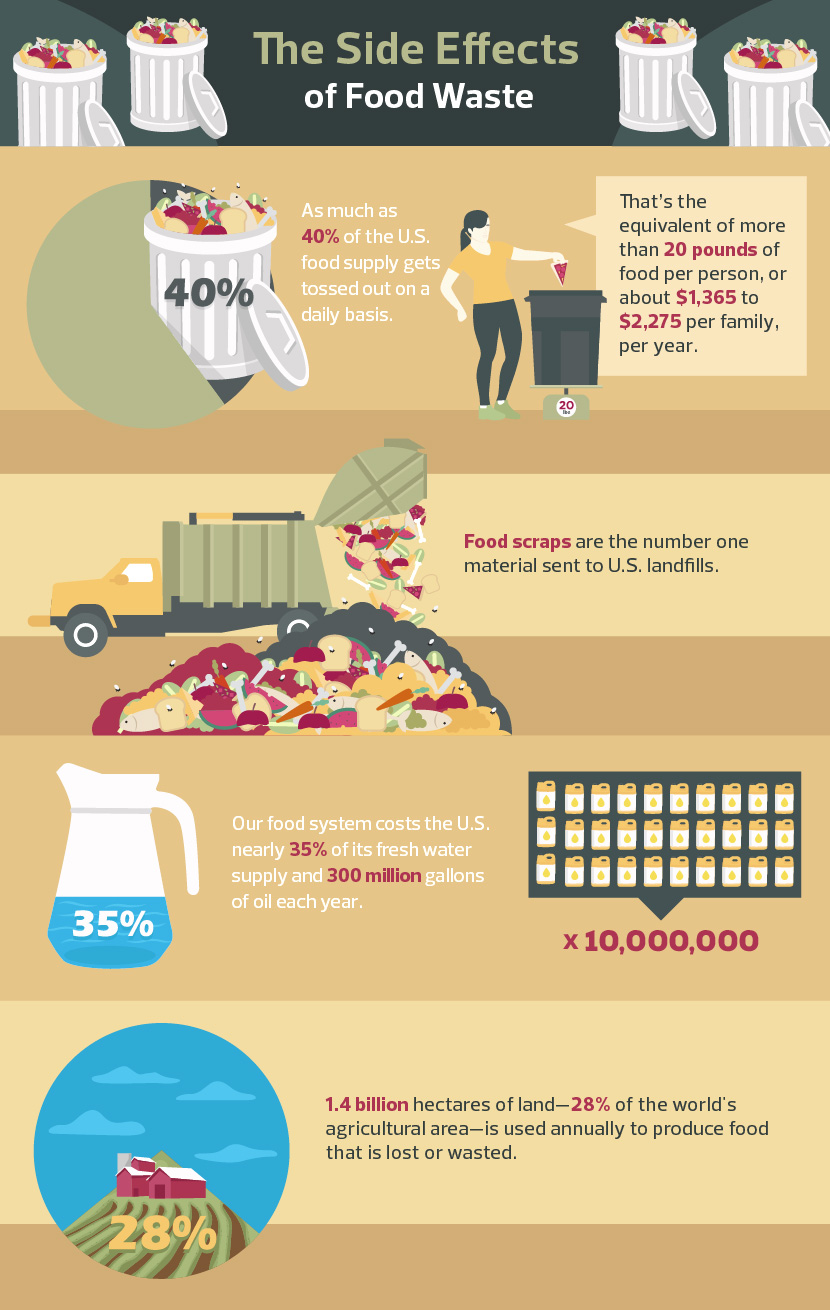
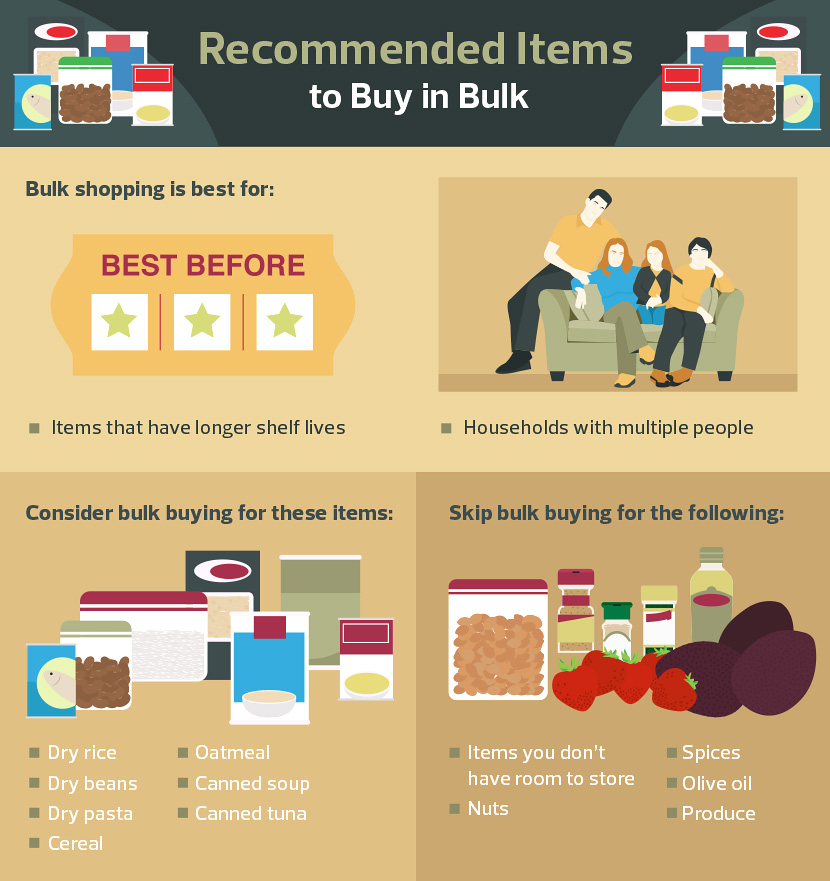
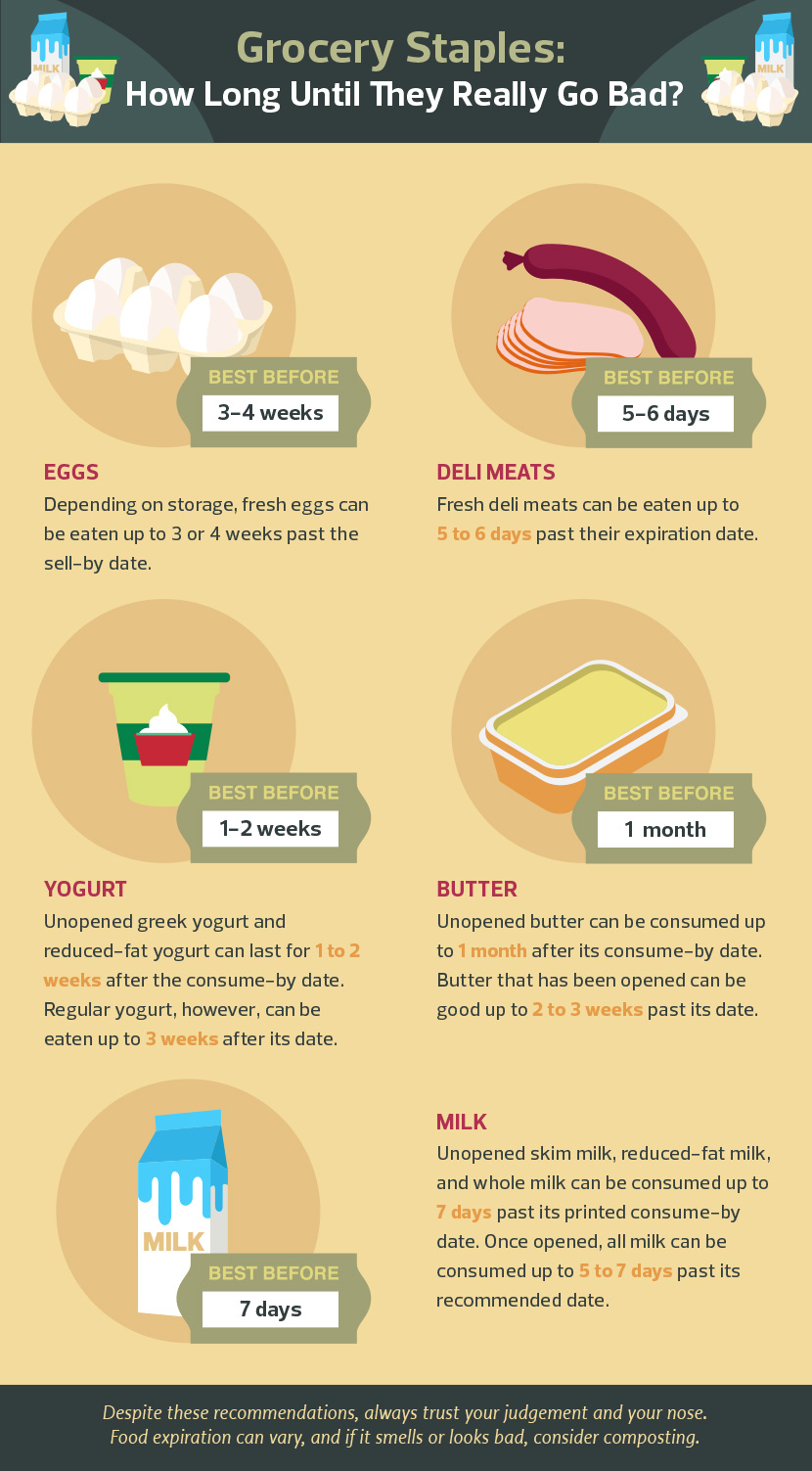
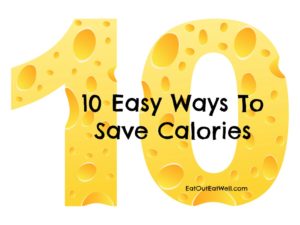
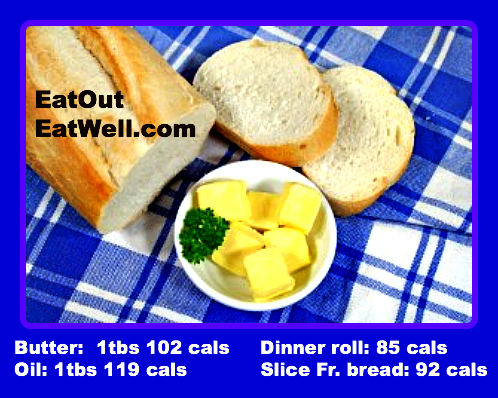
Have you been known to invade the breadbasket with gusto as soon as it lands on the table?
Then do you mindlessly continue to munch before and during your meal either because you’re hungry or because the bread is there for easy nibbling or for sopping up gravy or sauce?
Olive oil for bread dipping is giving butter some stiff competition. Olive oil arrives green or golden, plain, herbed or spiced. It can be plopped down on your table, or poured with a flourish. Some restaurants offer a selection for dipping – and attempt to educate you about the variation in flavors depending upon the olives’ country of origin.
Butter can also appear in many forms. It still may still arrive in shiny foil packets – what would a diner be without them – or mounded in pretty dishes and sprinkled with sea salt or blended with various fruits or herbs.
Don’t be misled by the presentation — butter and oil, although delicious, are high calorie, high fat foods. Certain oils may be heart healthy, but they are still caloric.
Hidden cameras in Italian restaurants have shown that people who put olive oil on a piece of bread consume more fat and calories than if they use butter on their bread. But, the olive oil users end up eating fewer pieces of bread than the butter eaters.
In the study done by the food psychology laboratory at Cornell University, 341 restaurant goers were randomly given olive oil or blocks of butter with their bread. Following dinner, researchers calculated the amount of olive oil or butter and bread that was eaten.
The researchers found:
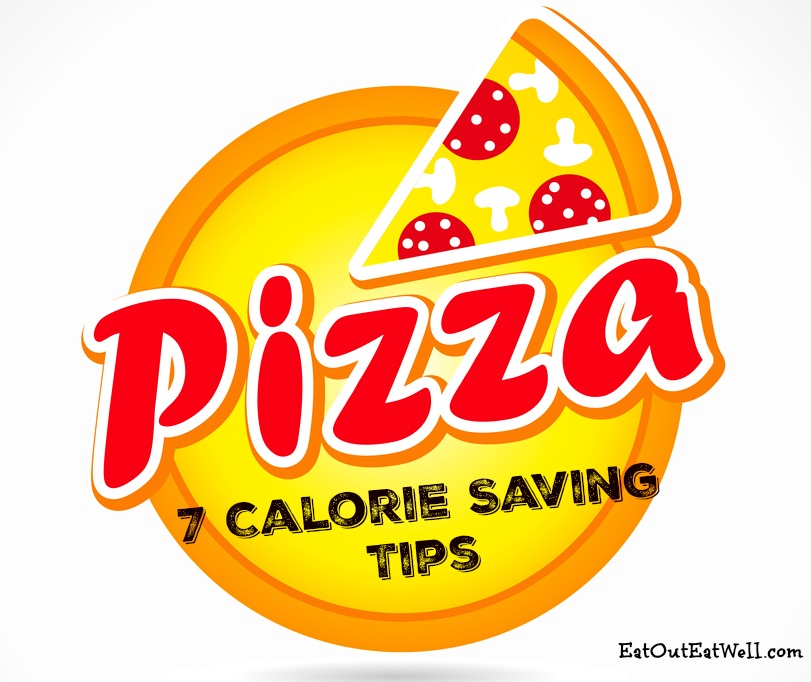
If your mouth waters at the thought of melted cheese and pepperoni on thick or thin crust, take comfort that you’re not alone:
Pizza can be pretty good food – both in calories and nutrition. On the other hand it can be pretty lousy – both in calories and nutrition.
It’s difficult to estimate the number of calories and fat grams in a slice of pizza because the size and depth of the pies and the amount of cheese, meat, or other toppings vary enormously.
Here’s the good news: pizza can be a healthy food choice filled with complex carbs, B-vitamins, calcium, protein, vitamin A, and vitamin C and calorically okay if you choose wisely and don’t eat more than your fair share.
The not so good news: the amount of fat, calories, and the variation in portion size. If your mouth starts to water at the thought of golden brown crust and cheesy goodness — here’s the downer: that luscious slice of pizza that should be about the size of two dollar bills – not the size of a small frying pan or a quarter of a 12” circle.
Check out the difference in calories for the same size slice (1/8th of a pie) between the classic hand-tossed pizza, the deep dish, and the crunchy thin crust for the same toppings. Then check out the difference in calories for the toppings.
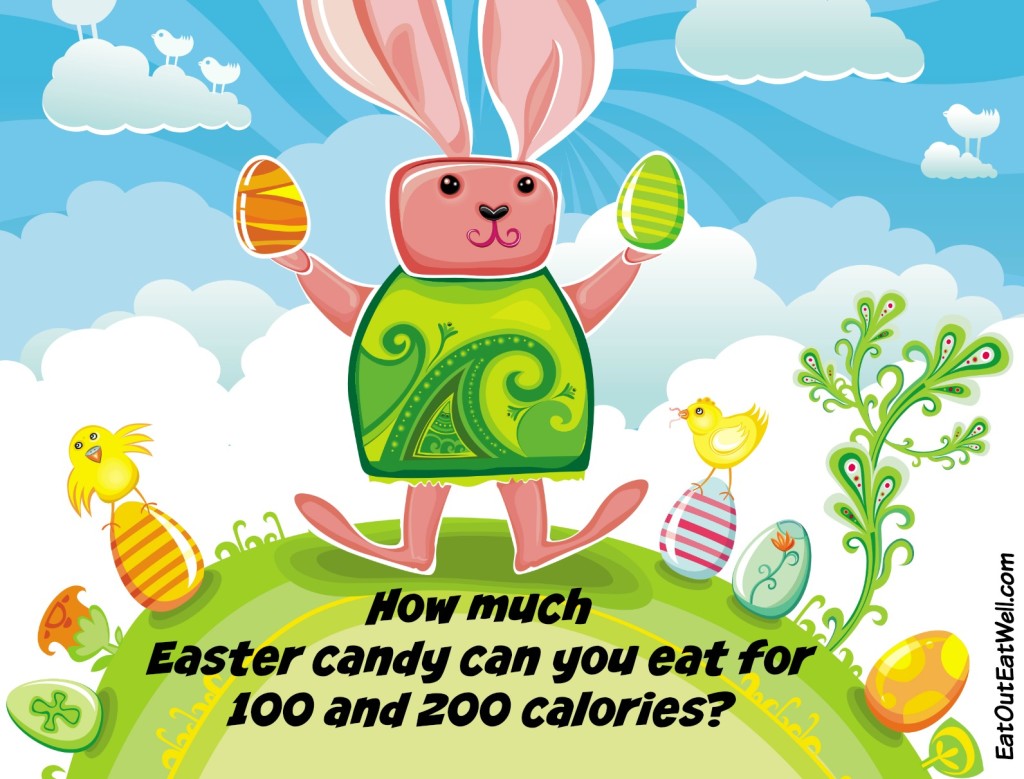
Peeps, jellybeans, and chocolate eggs are extremely popular types of Easter candy, but the National Confectioners Association says that on Easter, children head for chocolate Easter bunnies first.
No matter how old we are, we all have our preferred way of attacking the chocolate rabbit. Just so you know where you rank, 76% of us eat the ears first, 13% bite off the feet, and 10% go for the tail. Sixty-five percent of adults prefer milk chocolate; 27% prefer dark chocolate.
Bunnies aren’t the only chocolate treat of the season. Chocolate eggs — solid, hollow, decorated, candy-coated, and filled with sweetness – give the bunnies a race through the grass.
Chocolate Easter eggs, along with chocolate bunnies, first made their appearance in the 1800’s. They can be found everywhere and at every price point, some decorated with flowers and others wrapped in foil. You can find them in chain stores, discount stores, high-end chocolatiers, and sitting in a bowl on just about every receptionist’s desk.
Easter is the second ranked holiday for candy purchases in the United States (just behind Halloween) and solid, hollow, and filled chocolate Easter eggs and chocolate bunnies are extremely popular choices.
Today’s Easter eggs are mostly sweet chocolate made from cocoa solids, fat, sugar, and some form of milk. The first chocolate eggs were solid and made of a ground roasted cacao bean paste. Hollow eggs didn’t come on the scene until sometime later when a type of “eating chocolate” was developed. By the turn of the 19th century the improved process of making chocolate, along with newer manufacturing methods, made chocolate Easter eggs an Easter gift of choice.
John Cadbury developed the first French eating chocolate in 1842, but the first Cadbury Easter eggs didn’t arrive until 1875. A far cry from today’s Cadbury Crème egg, early Cadbury eggs were smooth surfaced dark chocolate filled with small silver candy balls called dragees.
Today’s Cadbury Crème Egg has a chocolate shell and a filling that’s a mix of white and yellow fondant made of sugar and water beaten into a crème. Since the first egg was made in the 1920s, new varieties include fillings of caramel, chocolate, mint, and peanut butter.
Solid Milk Chocolate Easter Bunny (2.5 ounces): 370 calories (average)
Dove Solid Chocolate Easter Bunny, whole bunny (4.5 ounces): 675 calories
Cadbury Solid Milk Chocolate Easter Bunny: 890 calories
Lindt Dark/Milk Chocolate Bunny (1.4 ounces): 225 calories
Sees Whole Bunny (4.5 ounces): 650 calories
Reese’s Peanut Butter/Reester, whole bunny (5 ounces): 720 calories
Russell Stover, whole bunny (4 ounces): 630 calories
According to the Hershey Company website, Hershey’s candy coated milk chocolate eggs, chocolate crème eggs, peanut butter eggs, and all hershey’s kisses arel OUD.
Most of us don’t need a reason to indulge on a holiday – it is a celebration, after all. But, just in case you want to “carefully” indulge on Easter candy, here’s how much of your favorite candy you can gobble down to the tune of 100 calories: